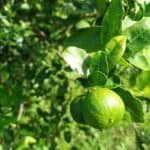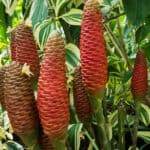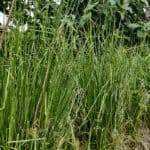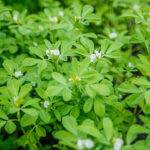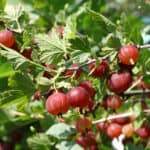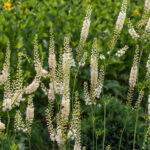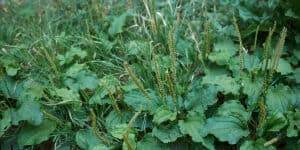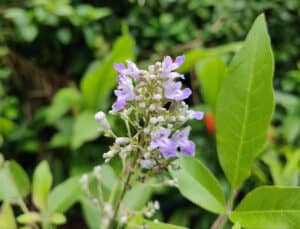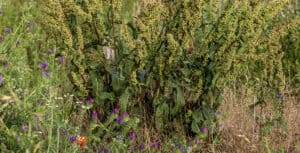Plant Overview
The humble wild rose, with it’s small flowers and thorns she is adorned from afar. She likes to grow along roadsides, streams, creeks, washes and generally anywhere along moist valleys. Unlike her domesticated sister, the wild rose has quite the small flowers and doesn’t much have a strong scent.
There are about 25 species of native rose hips in the United States and a few more which have been introduced from afar. They have been used historically for over a millennia as a cure to numerous ailments, to make breads and jams, tea and wine and even soups.
These perennial bushes can grow quite extensively and even climb up trees using their spines for support. I have personally seen rose hips hanging high above my reach in an apple tree. While all parts of the plant are edible and nutritious, the fleshy red fruit which encases the seeds has the most amount of nutrients. The young and tender leaves can be dried and used for tea, the flowers can be candied.
The flesh, once seeds are removed from it, can be dried and powdered, and sprinkled on cereals and pies, it can be cut into pieces and used for hot rose tea. The flesh contains the most nutrients and has been consistently shown that it provided between 400 mg and 2000 mg of vitamin c per 100 grams. That’s well over 20 times more than any citrus could ever dream of providing.
Propagation & Planting
Seeds need to be stratified (chilling period of 60 hours or so usually, this would be winter in the temperate climates) before germinating with some species only germinating after two chill periods. Planting from seeds takes quite a while to get a decent crop of rosehips (like 4 or 5 years), but is the only way to ensure genetic diversity and perpetuate natural evolution.
When planting seeds I sprinkle a few seeds in a pot from this years harvest and bury them about half an inch under well mixed and sifted topsoil and aged manure. I leave the pot outside to overwinter to stratify the seeds. If you are impatient before you plant the seeds you can stick em in the freezer for a week, then you can plant them anytime of year. I prefer to do root divisions or even clone some branches.
Rose hips are also opportunistic rooters and will send out roots where moisture is present. I like to find some straggly branches which have rooted and snip them off. Voila a new plant for the taking. Rosehips will send out new shoots from their base. It is not impossible, although you might get attacked by the thorns, to dig up a shoot with roots directly from the base.
Last but not least, and probably my favorite way, find a nice healthy branch in mid to late autumn and cut about a foot of it. Plant this new stick in its new permanent location and cover 4/5ths of it with good soil. Take a glass jar and cover the tip. Leave it like this all winter long.
The greenhouse effect and retained moisture will help the new stick stay hydrated and warm all winter and will most surely root. Tug on it when the earth becomes warm enough to work and if it doesn’t budge then you got some nice strong roots formed.
I prefer this method cause it’s very hassle free and works great. Considering all roses, currants, raspberries, gooseberries, blackberries and probably some others I cant recall, are all in the same family, they will all easily propagate this way. Careful though, it can become quite addictive.
Growth and Care
She isn’t picky about where she grows. She does prefer full sun and rich soil which drains well. If the soil doesn’t drain too well she may suffer from fungal attacks. I like to crush up limestone and chuck it in when I am planting the plant.
The limestone raises pH and prevents fungal attacks, plus it slowly leeches throughout the years so I only need to reapply a dressing every 5 years or so. The roots suck up the minerals and the pH of the whole plant also becomes more alkaline, thus preventing diseases.
I keep my rosehips bushy, chest high or so is good for me as I can reach around the whole plant and pick all the flowers and fruit with ease. Pruning once every two months is sufficient for my taste. The sticks I prune usually end up in the compost but if I want to expand my colony of rosehips and living fence then ill stick em in water for a few weeks and in the ground around middle of autumn with the jar over their tips, as described above.
Harvesting Your Rosehips
The harvesting process is straightforward. I enjoy this time of year as the cooler temperatures of middle to late autumn make the surrounding scenery a gorgeous background for my rosehip picking.
Really you can harvest rosehips as soon as the fruit has formed, middle of summer I’d say, but I wait as much as possible so the plant can really pump those fruit full of nutrients. You can even harvest in the dead of winter if you want.
Careful of the thorns and never take more than a third of the surrounding fruit: rosehips, hawthorns, serviceberries and other fruit which hang on the branch all winter are an incredibly valuable winter food for all sorts of wildlife. After the first frost, the flesh of the rosehip fruit will soften considerably and eating them fresh will be much more enjoyable (and not as tart) due to the released sugars.
Processing & Utilizing
I like to dry the abundance of fruit in a shady place that gets a lot of airflow. Rosehips don’t have a high moisture content so this process doesn’t take too long. I usually lay them out on a counter on a newspaper or even in trays. Stacking only one layer so I don’t invite the possibility of mold or moisture retainment. After dried, I store them in glass jars for up to two years.
The downside to this easy storing method is that the hairy seeds on the inside are still there, and when you want to use the berry you will have to deal with them. Luckily for me, I dont mind chewing and spitting em out along the trail, thus planting them everywhere I go.
Another method which I find fascinating is to cut the berries in half while they are still fresh and scoop out the seeds and hairy contents. Then you dry them however you like, on low heat in the oven or on a newspaper like me, or even a dehydrator.
Regardless the method, after they are dry you chuck em in the blender and whip it real good. Voila, now you have rosehip flour. Sweet, tangy, raw, packed with all your vitamin C you need for the winter. It’s delicious, it’s a virus killer, it’s an immune stimulant, and socially underrated!
You can use rosehip flour everywhere, from pies, to breads, in teas, you can even add it to your wine making process to give a lil extra oomph!
Conclusion
Once again a very underrated plant in the west, rosehips are such a gem for the immune system especially in winter, when all the vitamin c packed fruit are out of season. It’s like Mother Earth is intelligent, she knows that we need specific nutrients and makes sure to provide us and all of the habitat with nutrient dense food which is hassle free to take care of and basically grows on its own.
Rosehips are one of my favorite bushy perennials to grow because they form a safe haven for small animals and birds from predators, rosehips provide great nutrition throughout the seasons, from leaves for tea to flowers and fruit in winter.
Rosehips are tough, they will grow almost anywhere and excel in claiming land and enriching it.
A garden without rosehips is like a pie without a crust. It’ll do, but it just isn’t quite what it could be.
























